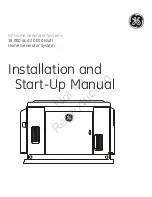
1-7
1.4 Wiring between Inverter and Peripheral devices and notice
CAUTION
1.
After turning OFF the main circuit power supply, do not touch the circuit
components or change any circuit components before the “CHARGE” lamps
extinguished. (It indicates that there is still some charge in the capacitor).
2.
Never do wiring work or take apart the connectors in the inverter while the power
is still on.
3.
Never connect the inverter output U/T1, V/T2, W/T3 to the AC source.
4.
Always connect the ground lead E to ground.
5.
Never apply high voltage test directly to the components within the inverter. (The
semiconductor devices are vulnerable to high voltage shock.)
6.
The CMOS IC on the control board is vulnerable to ESD. Do not try to touch the
control board.
7.
If Sn-03 is 7,9,11 (2-wire mode) or is 8, 10, 12 (3-wire mode), except parameter
settings of Sn-01 and Sn-02, the other parameter settings will return to their initial
settings at factory. If the inverter is initially operated in 3-wire mode (Sn-03= 8,
10, 12), the motor will rotate in CCW sense after setting changed to 2-wire mode.
(Sn-03= 7, 9, 11). Be sure that the terminals 1 and 2 are OPEN so as not to
harmful to personal or cause any potential damage to machines.
CAUTION
1.
Determine the wire size for the main circuit so that the line voltage drop is within
2% of the rated voltage. If there is the possibility of excessive voltage drop due to
wire length, use a larger wire (larger diameter) suitable to the required length
-3
10
current(A)
length(m)
wire
/km)
(
resistance
wire
3
drop(V)
voltage
Line
×
×
×
Ω
×
=
2.
If the length of the cable wire between the inverter and the motor exceeds 30m,
use a lower carrier frequency for PWM (adjust the parameter Cn-34). Refer to
Page 3-21












































